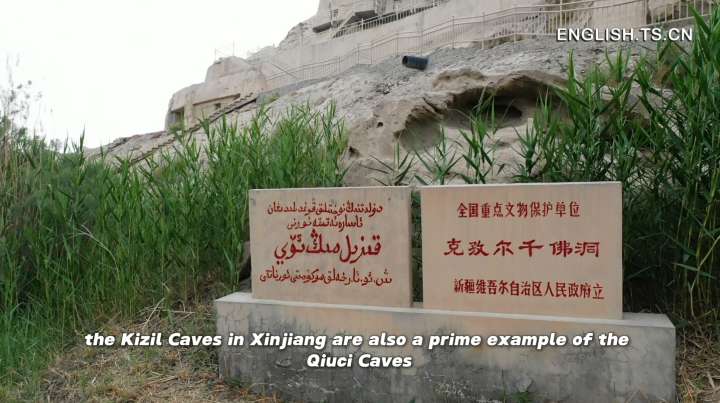Recently, "Black Myth: Wukong," has captivated global audiences with its stunning Chinese aesthetics and intricate storyline. Inspired by the classic novel Journey to the West, this cultural masterpiece has ignited interest in Chinese culture worldwide, amassing over ten million copies sold with online player counts soaring to three million.
"Black Myth: Wukong" authentically recreates famous Chinese landscapes and historical sites. Located on the Mingwutage Mountain in Xinjiang's Aksu Prefecture, the Kizil Caves date back to the 3rd-4th centuries, predating Mogao Grottoes in Dunhuang by three hundred years. Their vibrant murals boast unique diamond-grid composition, showcasing Buddhism's evolution in Xinjiang. Xuanzang, the inspiration for the monk in Journey to the West, echoes the murals of the Kizil Caves and witnessed the spread of Buddhism along the Silk Road.

Supervisors: Ding Tao and Jie Wenjin
Planner: Cheng Li
Script/Production/Voice: Song Duer
Reviewers: Zhang Shijie and Hou Weili
(Sourced from Xinhua, promotional video of "Black Myth: Wukong," TV series "Journey to the West," and the Media Convergance Center of Baicheng County)
(A written permission shall be obtained for reprinting, excerpting, copying and mirroring of the contents published on this website. Unauthorized aforementioned act shall be deemed an infringement, of which the actor shall be held accountable under the law.)









